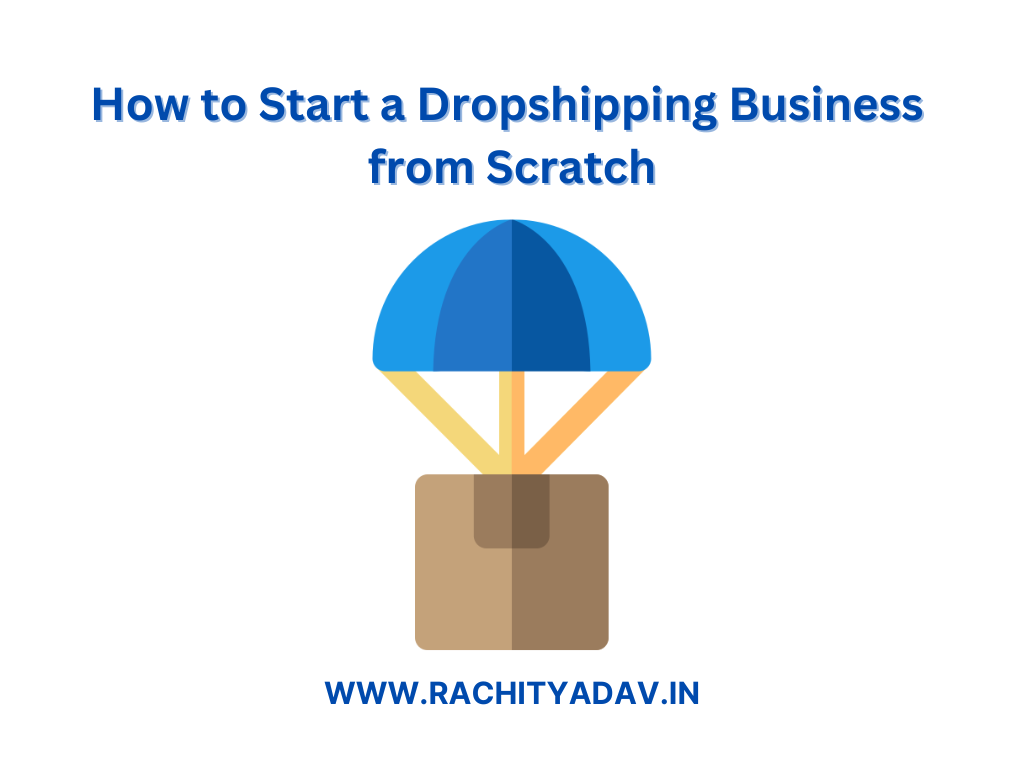Dropshipping business is a popular e-commerce business model that allows entrepreneurs to sell products online without holding any inventory. Instead, the entrepreneur partners with a supplier who ships products directly to customers. This model can be attractive to those looking to start a business without a significant upfront investment.
In this blog, we’ll explore how to start a dropshipping business from scratch.
Step 1: Choose a niche
The first step to starting a dropshipping business is to choose a niche. A niche is a specific market segment or product category that you want to focus on. Choosing a niche allows you to target a specific audience and differentiate your business from competitors.
When selecting a niche, consider the following factors:
- Your interests and expertise
- Market demand and trends
- Profit margins and competition
- Availability of reliable suppliers
Once you have identified a niche, research the products that you want to sell and assess their market demand, competition, and pricing.
Step 2: Research Suppliers
The success of a dropshipping business relies heavily on finding reliable suppliers who can provide high-quality products and timely shipping. When researching suppliers, consider the following factors:
- Product quality and variety
- Pricing and profit margins
- Shipping options and timelines
- Returns and refunds policies
- Minimum order requirements and discounts
To find suppliers, you can use online directories such as AliExpress, Tradeford, IndiaMart, SaleHoo, or Wholesale Central. You can also attend trade shows or contact manufacturers directly to establish a partnership.
Step 3: Choose an e-commerce platform
To sell products online, you’ll need an e-commerce platform to host your store. There are several platforms to choose from, such as Shopify, WooCommerce, or BigCommerce. When selecting a platform, consider the following factors:
- Ease of use and customization
- Payment and shipping integrations
- Customer support and security
- Pricing and fees
Once you have selected a platform, you can customize your store’s design, add products, and set up payment and shipping options.
Step 4: Set up Marketing Strategies
To attract customers to your store, you’ll need to implement effective marketing strategies. When developing a marketing plan, consider the following tactics:
- Search engine optimization (SEO) to improve your store’s visibility in search engines
- Social media marketing to engage with your target audience and promote your products
- Email marketing to reach out to potential customers and nurture relationships with existing ones
- Influencer marketing to leverage social media influencers to promote your products
- Paid advertising such as Google Ads or Facebook Ads to drive traffic and sales to your store
It’s essential to monitor your marketing campaign’s performance regularly and adjust your strategies accordingly.
Step 5: Launch and Manage Your Store
Once you have completed the above steps, you’re ready to launch your store. However, launching your store is just the beginning. You’ll need to manage your store effectively to ensure its success.
Consider the following tips to manage your store:
- Monitor your inventory and ensure that your products are in stock
- Fulfill orders promptly and provide tracking information to customers
- Respond to customer inquiries and resolve any issues promptly
- Monitor your sales, revenue, and expenses to assess your store’s performance
- Continuously optimize your store’s design, product offerings, and marketing strategies to improve its performance.
Conclusion
Starting a dropshipping business requires careful planning and execution. By following the steps outlined in this blog, you can launch a successful dropshipping store and achieve your entrepreneurial goals.
Remember that success in dropshipping requires patience, persistence, and a willingness to adapt and learn from your experiences.





 Are you ready to turn your passion into a profitable venture? Introducing “Creative to Creativepreneur: The Ultimate Guide to Monetizing Your Skills and Talents”. This comprehensive guide will show you how to turn your creative ideas into a thriving business.
Are you ready to turn your passion into a profitable venture? Introducing “Creative to Creativepreneur: The Ultimate Guide to Monetizing Your Skills and Talents”. This comprehensive guide will show you how to turn your creative ideas into a thriving business.

